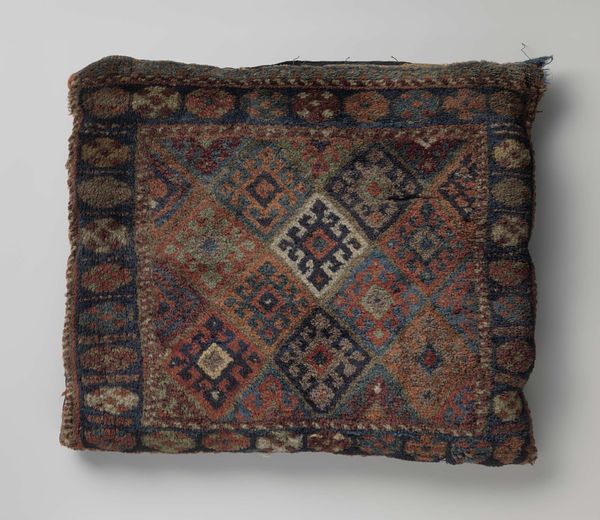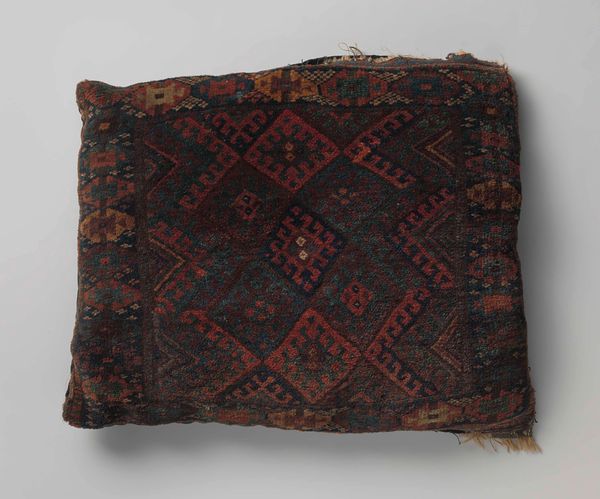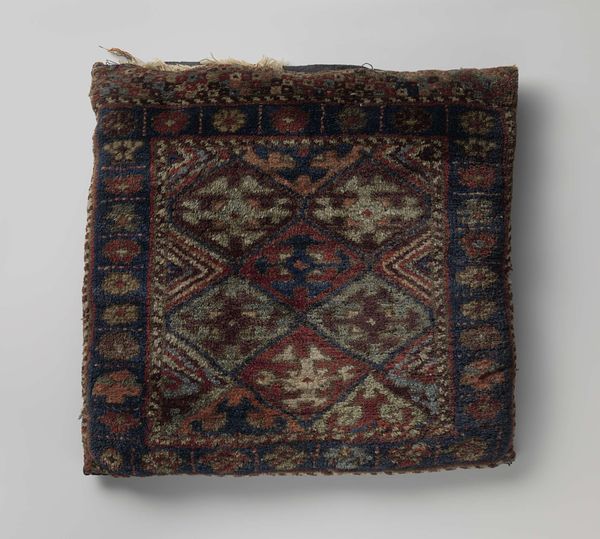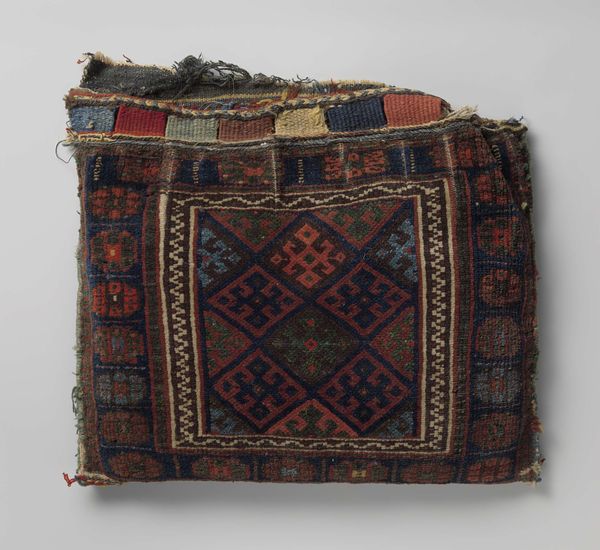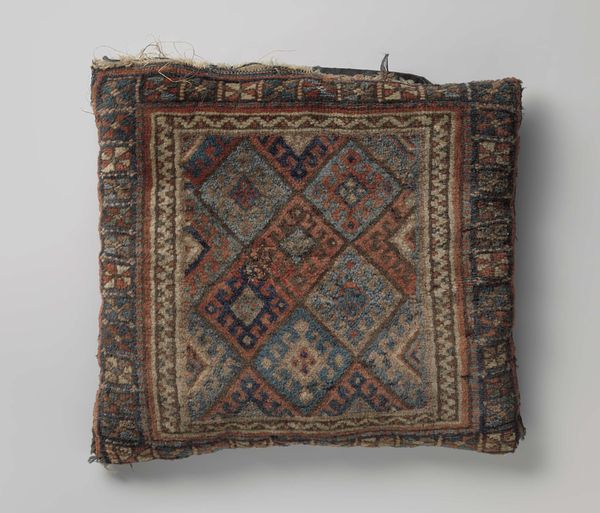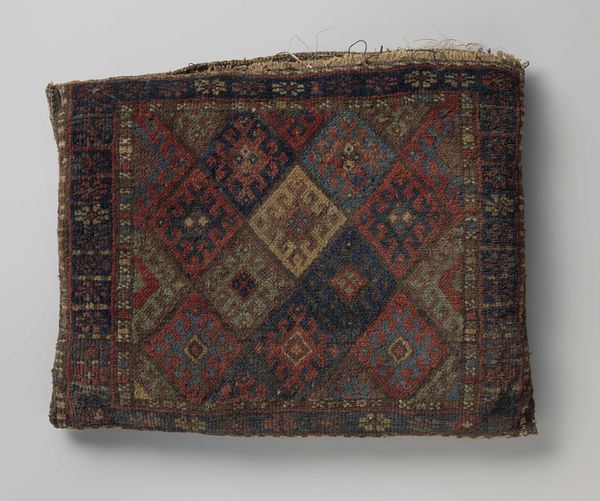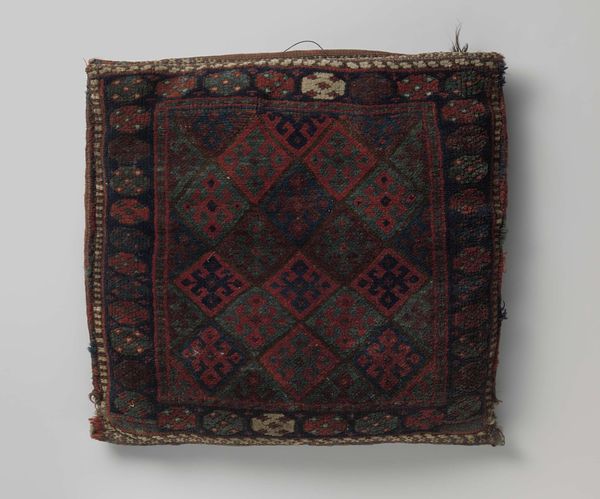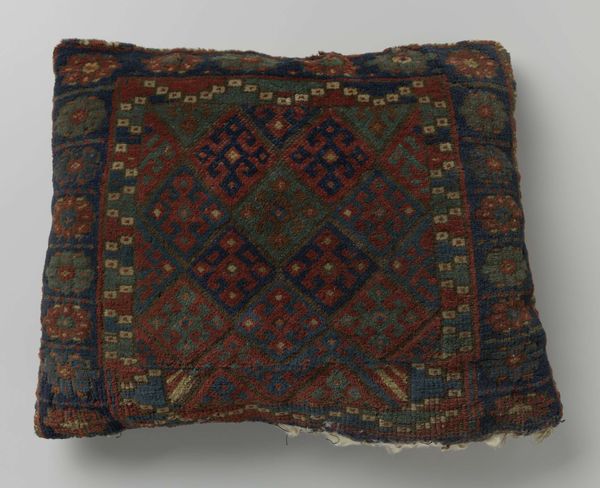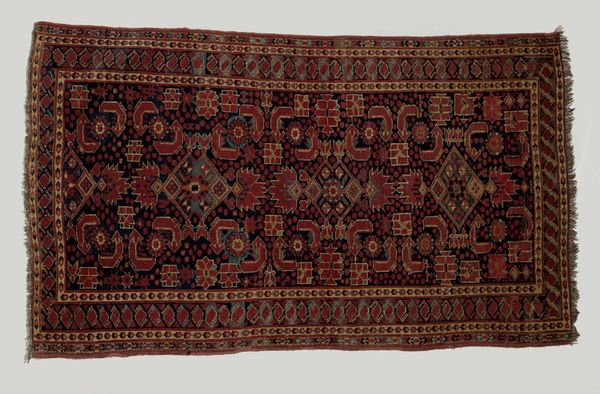
Voorblad zadeltas versierd met rastermotief; drievoudige rand met rozetbloemen c. 1800 - 1900
0:00
0:00
weaving, textile
#
natural stone pattern
#
weaving
#
textile
#
fashion and textile design
#
hand-embroidered
#
geometric
#
fabric design
#
repetition of pattern
#
regular pattern
#
pattern repetition
#
islamic-art
#
textile design
#
decorative-art
#
imprinted textile
#
layered pattern
Dimensions: height 52 cm, width 60 cm
Copyright: Rijks Museum: Open Domain
Curator: This is the front panel of a saddlebag from the Jaffi people, likely woven between 1800 and 1900. Look at the incredible textile work, all those knots and dyes, still holding stories within their structure. Editor: My immediate impression is how earthy yet refined the colors are—the deep blues, muted reds, and browns create a sense of grounded elegance. It makes you wonder about the journey it has been on. Curator: Exactly! And notice the geometric designs. That grid of diamonds dominates the composition, while the borders showcase repeating rosettes. There’s a sense of order here, almost mathematical, which often connects to cosmological understandings within Islamic art traditions. Editor: It speaks to the careful thought given to its creation and use. Saddlebags are, after all, utilitarian, but this level of decoration elevates the everyday. We can imagine a person meticulously hand-embroidering it, putting intention and symbolism into each knot. Curator: The rosette, a very ancient symbol, might represent wholeness, cycles, and the unfolding of life—very universal concepts to be carrying with you on a journey. The diamond is also intriguing. Its grid form can also carry the implication of the cosmos. Editor: Knowing these bags were often used by nomadic or semi-nomadic groups highlights the crucial role textiles played, not just for function, but also as portable expressions of cultural identity and belief systems. This panel served a real purpose, yet its design clearly reflected the owner's worldview and their place within the world. Curator: The saddlebag acts as a keeper of shared cultural memory, reflecting motifs that endure and evolve. That tension of order and symbolism reminds me how images continue to be bearers of meaning across time. Editor: Agreed. Analyzing such textiles allows us to acknowledge the diverse roles of women in art history, those often marginalized voices. Their work and understanding must be contextualized in cultural traditions where survival, belief systems, and social commentary were so tightly connected. Curator: Looking closer, there's a history embedded within each fiber. Thank you, textiles, for preserving the cultural past. Editor: These artifacts enable tangible links to ways of life and values of individuals and peoples—in this case, carried far from its place of creation. What powerful witness is woven through time!
Comments
No comments
Be the first to comment and join the conversation on the ultimate creative platform.
